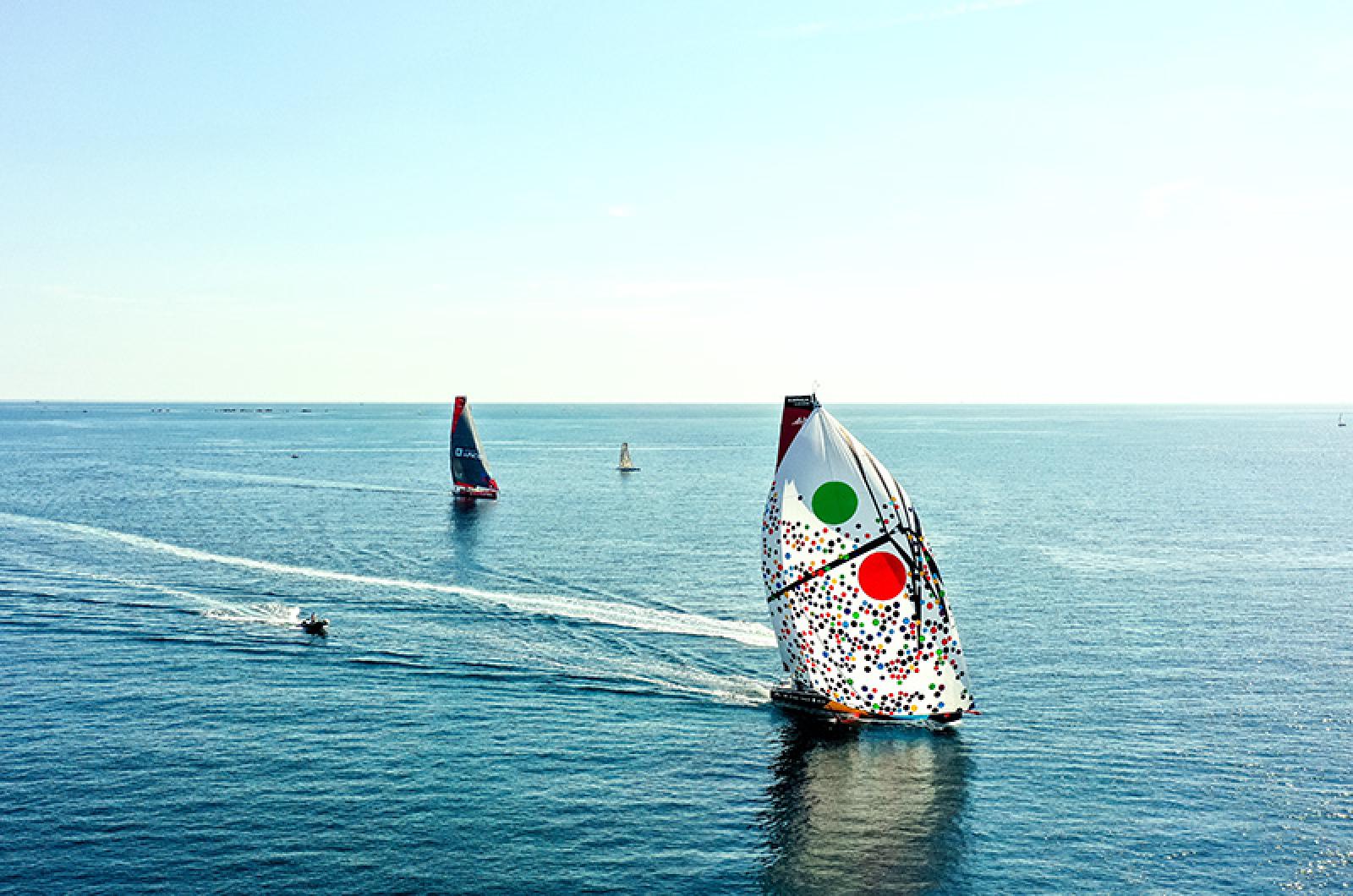Artist Sarah Morris is no stranger to site-specific work. Her art decorates many places and institutions, from the ceiling of the Lever House in midtown Manhattan to the walls of the Palais de Tokyo in Paris.
This past summer, she took her flair for installation in a different direction — to sea.
As part of a collaboration with the sail racing Team Malizia, the same sailors who transported climate activist Greta Thunberg across the Atlantic to the United Nations Summit, Ms. Morris recently designed the spinnaker sail that will propel Team Malizia in its next race.
Ms. Morris divides her time between New York and the Vineyard. She grew up around boats in Rhode Island, she said, and learned to paint by painting the bottom of her dad’s boat every year. So when the Hamburg art institution Deichtorhallen and the German offshore sailor Boris Herrmann approached her for the piece, she jumped at the opportunity.
“It’s a thrill to do a project like that as an artist,” she said by phone from New York.
After its debut in Hamburg, Germany, Malizia will be using the sail, which was completed in July, on their voyage to Newport, R.I. next spring.
With its bold coloring and geometric patterns, the spinnaker is purposely reminiscent of naval codes, Ms. Morris said. But it also contains an Island connection. Ms. Morris has been coming to the Vineyard since she was a child, after her parents first honeymooned near Lake Tashmoo over 50 years earlier at the recommendation of a friend.
“I don’t know who told them to go to the Vineyard in the 60’s, but whoever did got it right.” she said.
Her parents now live on Lambert’s Cove, and Ms. Morris, after spending summers in the area, bought a home in the Spring Point section of Chilmark in 2006. The painting that influenced Ms. Morris’ sail design, first showcased last fall in London, is titled Spring Point after her property and the time she spent there during the early stages of the pandemic.
“That show was completely produced during Covid, and it was all based on different spider webs that I photographed in Spring Point,” she said. “It’s not supposed to be photo representational, of course, it’s just the beginning element of the work was with these funnel spider webs…I was sort of intrigued by how improvised this sort of architecture is and how clever this architecture is.”
The more she looked, the more Ms. Morris noticed the funnel spiderwebs taking over her property, she said.
“There is a sort of intelligence, like a high intelligence in those forms, that I found interesting to think about in relation to what we were going through [at that time]” she said. “Like the city emptying out, the city filling up again, the city emptying out, another community filling up, you know, this sort of shifting.”
Movement, she said, played an integral role in designing the spinnaker. Unlike her previous work, her spinnaker sail would mostly be viewed in motion. To account for that motion, she designed her piece using 3D software before any painting even took place. The planning process took almost six months, she said, although it only took a few weeks for the sail itself to be manufactured.
“I thought a lot about the larger question of navigation, socially and politically” Ms. Morris said. “How do you navigate? How do you think about the path that you’re going to take? And what do you use to get there?”
Ms. Morris chose the spinnaker sail, she said, for its immense speed and proclivity to bright colors. The spinnaker takes the full brunt of the wind, she explained, and can be difficult to control. Its history of patterns and markings, unique compared to most types of sails, is a way for racers to warn their competitors: “Watch out, I’m gaining on you.”
“Anybody who was raised [around sailing] knows how you handle the spinnaker determines how the race ends up,” Ms. Morris said. “If somebody is really clever with the spinnaker, you can suddenly find yourself being overtaken.”
“It’s sort of like the boat’s superpower,” she added. “It’s a secret weapon.”





Comments
Comment policy »